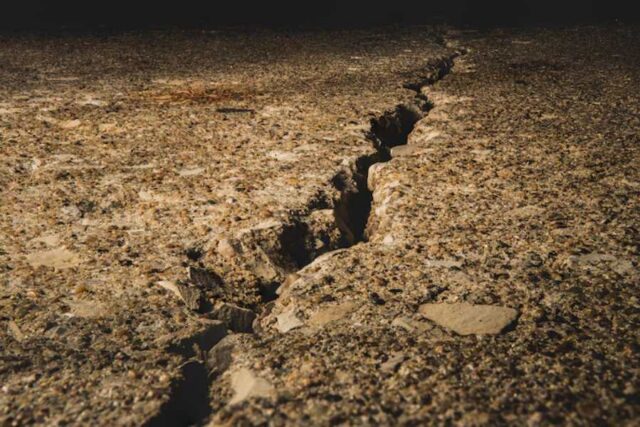Although Texas is not typically known for frequent seismic activity, earthquakes have occurred in the state from time to time. Unlike regions along the Pacific Ring of Fire, Texas is not commonly associated with large earthquakes, but smaller to moderate tremors have been recorded, particularly in the western and northern areas. Over the years, the state has experienced occasional seismic events, prompting interest in understanding the frequency and magnitude of such occurrences.
For residents, engineers, and policymakers, it’s essential to comprehend the potential risks of seismic activity in Texas. While earthquakes here are generally less severe than in states like California, recent tremors have raised awareness about the need for better preparedness. This article will examine whether an earthquake occurred in Texas, delve into the state’s history of seismic activity, and explore how these events have affected local communities and infrastructure.
Was there an earthquake in Texas?
Yes, Texas has experienced earthquakes, though they are less common and typically less intense than in earthquake-prone states like California. Texas is mostly shielded from significant seismic activity, but minor earthquakes, especially in the western and northern parts of the state, have been recorded. Recent events, like the 2020 earthquake near the Texas-Oklahoma border, have raised awareness of seismic risks in the state, though large earthquakes remain rare.
Earthquake History in Texas
Texas is not traditionally known for frequent or large earthquakes, but the state has experienced several minor to moderate tremors over the years. Despite being largely shielded from the seismic activity typical of areas like California, certain regions in Texas have seen significant earthquakes that raised awareness about the potential risks.
One of the most notable earthquakes in Texas history was the 1931 Snyder Earthquake. This event, which measured a magnitude of 6.0, was one of the largest in the state and caused considerable damage. More recently, the 2020 earthquake near the Texas-Oklahoma border once again drew attention to the presence of seismic activity in the region, with tremors that were felt across several states.
Texas has two primary seismic zones: the West Texas Seismic Zone and the Texas-Oklahoma Border Region. These areas are more prone to earthquakes, with the West Texas Seismic Zone being home to frequent small quakes. The Texas-Oklahoma border area also sees occasional seismic events, as evidenced by recent tremors in 2020. Understanding the history and distribution of these seismic zones is essential for future preparedness.
Why Do Earthquakes Occur in Texas?
While Texas is not typically associated with frequent seismic activity, earthquakes do occur due to a combination of natural geological factors and human activities. This section explores the primary causes behind seismic events in the state.
Geological Factors Contributing to Seismic Activity
Although Texas is not located on the Pacific Ring of Fire, the state does have geological conditions that make it susceptible to earthquakes. One of the primary geological factors is the presence of fault lines, such as the Pecos River Fault and the Balcones Fault Zone, which run through various parts of the state. These faults are weak points in the Earth’s crust where seismic activity can occur. While these fault lines are not as active as those in more seismically active areas, they can still experience stress and movement, leading to earthquakes.
Human-Induced Earthquakes
In addition to natural geological processes, human activity, particularly oil and gas extraction, has also been linked to seismic events in Texas. Hydraulic fracturing, or fracking, and the disposal of wastewater deep underground can cause pressure to build up in the Earth’s crust, potentially triggering earthquakes. This phenomenon, known as induced seismicity, has become more prominent in recent years, particularly in areas with intensive oil and gas operations. The correlation between these human activities and increased seismic activity has sparked debates about the role of industrial practices in earthquake generation, making it an important area of study for both geologists and policymakers.
How Often Do Earthquakes Occur in Texas?
Earthquakes in Texas are relatively rare, but they do occur regularly enough to warrant attention. The frequency and magnitude of seismic events vary across different regions of the state, with certain areas more prone to tremors than others.
- Earthquake Frequency in Texas: Texas experiences about 10 to 20 earthquakes annually, though most of these are minor. The frequency can vary from year to year, and while most events are low in magnitude, larger tremors do occasionally occur.
- Earthquake Magnitudes in Texas: Most earthquakes in Texas are small, typically below 4.0 on the Richter scale. However, the state has experienced larger events, such as the 6.0 magnitude Snyder earthquake in 1931, which remains one of the most significant in its history.
- High-Risk Areas in Texas: The western part of Texas, particularly near the Pecos River Fault, is more active seismically. Additionally, the Texas-Oklahoma border region has been a frequent site of seismic activity, including more recent tremors, making it a high-risk area for future events.
How Earthquakes in Texas Impact Local Communities
Although Texas does not experience frequent or large earthquakes, even minor tremors can have a noticeable impact on local communities. Small earthquakes can cause damage to buildings and infrastructure, particularly in older or poorly constructed structures. The economic costs of repairs, rebuilding, and improving infrastructure to withstand seismic activity can be significant for both local governments and residents.
Additionally, the psychological impact of living in areas that experience occasional earthquakes is not to be overlooked. Residents in earthquake-prone areas may experience anxiety or stress due to the unpredictable nature of seismic events. The fear of potential larger earthquakes can alter daily life and community dynamics.
Communities also face challenges in terms of preparedness. The public’s perception of earthquake risks varies, and local governments must address these concerns by implementing effective disaster preparedness plans. A strong response strategy is critical to minimizing the social and economic impacts when earthquakes do occur.
What Measures Are Taken to Prepare for Earthquakes in Texas?
Although Texas does not experience frequent or major earthquakes, the state takes significant steps to prepare for and mitigate their effects. These measures are crucial for minimizing damage and ensuring the safety of residents.
- Earthquake Monitoring in Texas: Texas is equipped with seismograph stations that monitor seismic activity across the state. Data collected from these stations help track earthquake occurrences and provide early warning for potential events. The Texas Earthquake Center plays a vital role in this monitoring effort, analyzing data to detect patterns and assess risks.
- Preparedness Measures: Texas has implemented various preparedness initiatives to help residents understand and respond to earthquake risks. Public awareness campaigns are launched to educate citizens on how to prepare for earthquakes, including emergency kits and evacuation plans.
- Earthquake-Resistant Building Codes: In areas where earthquakes are more likely, building codes have been updated to ensure structures are more resilient to seismic activity. Earthquake-resistant designs and materials help minimize the potential for damage during a tremor, protecting both lives and property.
Final Remarks
While Texas may not experience earthquakes as frequently as other regions in the U.S., the state has still faced notable seismic activity, and the risk persists. Recent events have highlighted that even minor earthquakes can significantly impact local communities. It’s crucial for both residents and policymakers to recognize these risks and take proactive measures.
This includes enhancing earthquake monitoring, updating building codes for greater resilience, and promoting public education on preparedness. By continuing to improve preparedness efforts, Texas can better manage the potential for future seismic events, ensuring the safety and well-being of its communities.
FAQ’s
Was there an earthquake in Texas recently?
Yes, Texas has experienced earthquakes, with recent seismic activity near the Texas-Oklahoma border in 2020. While large earthquakes are rare, minor tremors occur more frequently.
Why do earthquakes happen in Texas?
Earthquakes in Texas can be caused by natural fault lines and geological conditions, as well as human activities like fracking, which can induce seismicity.
How often do earthquakes occur in Texas?
Earthquakes in Texas are infrequent, but minor to moderate quakes occur occasionally. The frequency of earthquakes is highest in regions like West Texas and near the Texas-Oklahoma border.
Can earthquakes cause significant damage in Texas?
While most earthquakes in Texas are small, larger ones can cause damage to infrastructure and buildings. The impact of these earthquakes on local communities can be significant, depending on the magnitude.
What steps are taken to prepare for earthquakes in Texas?
Texas has implemented earthquake monitoring systems, public education programs, and building codes designed to reduce the impact of seismic activity. Communities in high-risk areas are encouraged to prepare for the possibility of future earthquakes.














